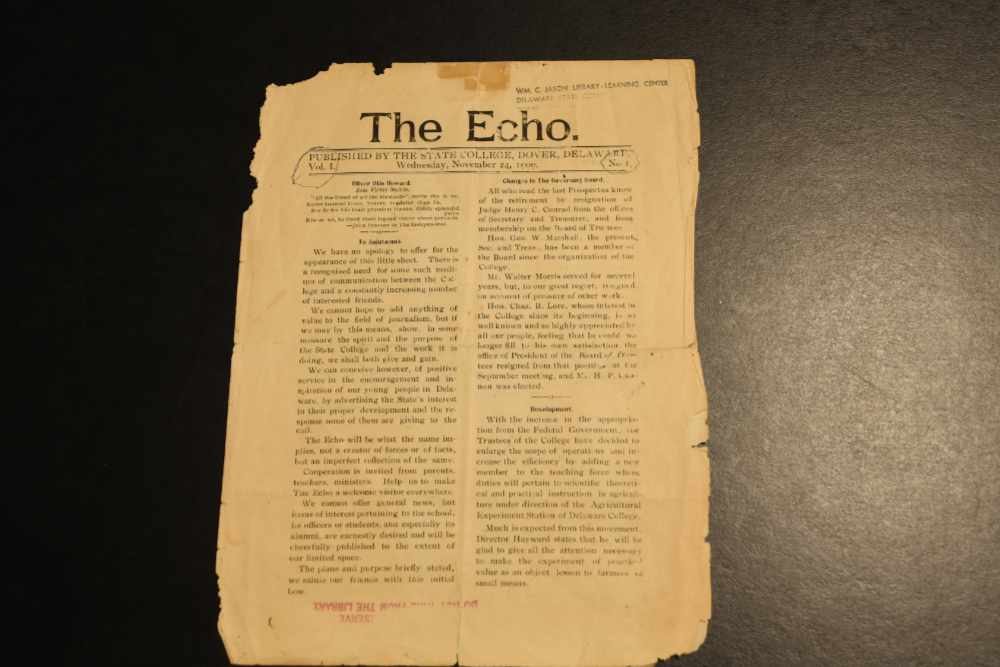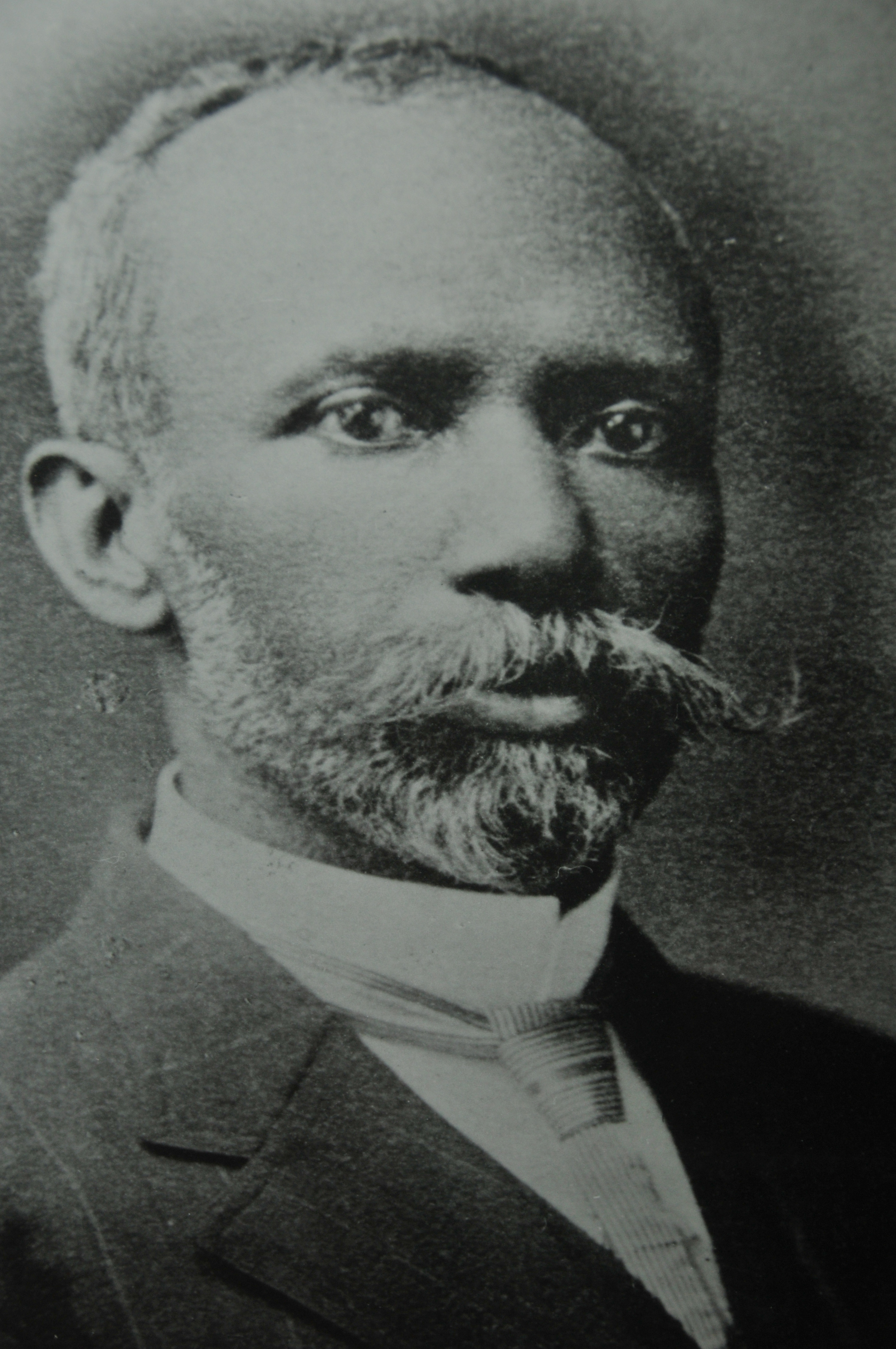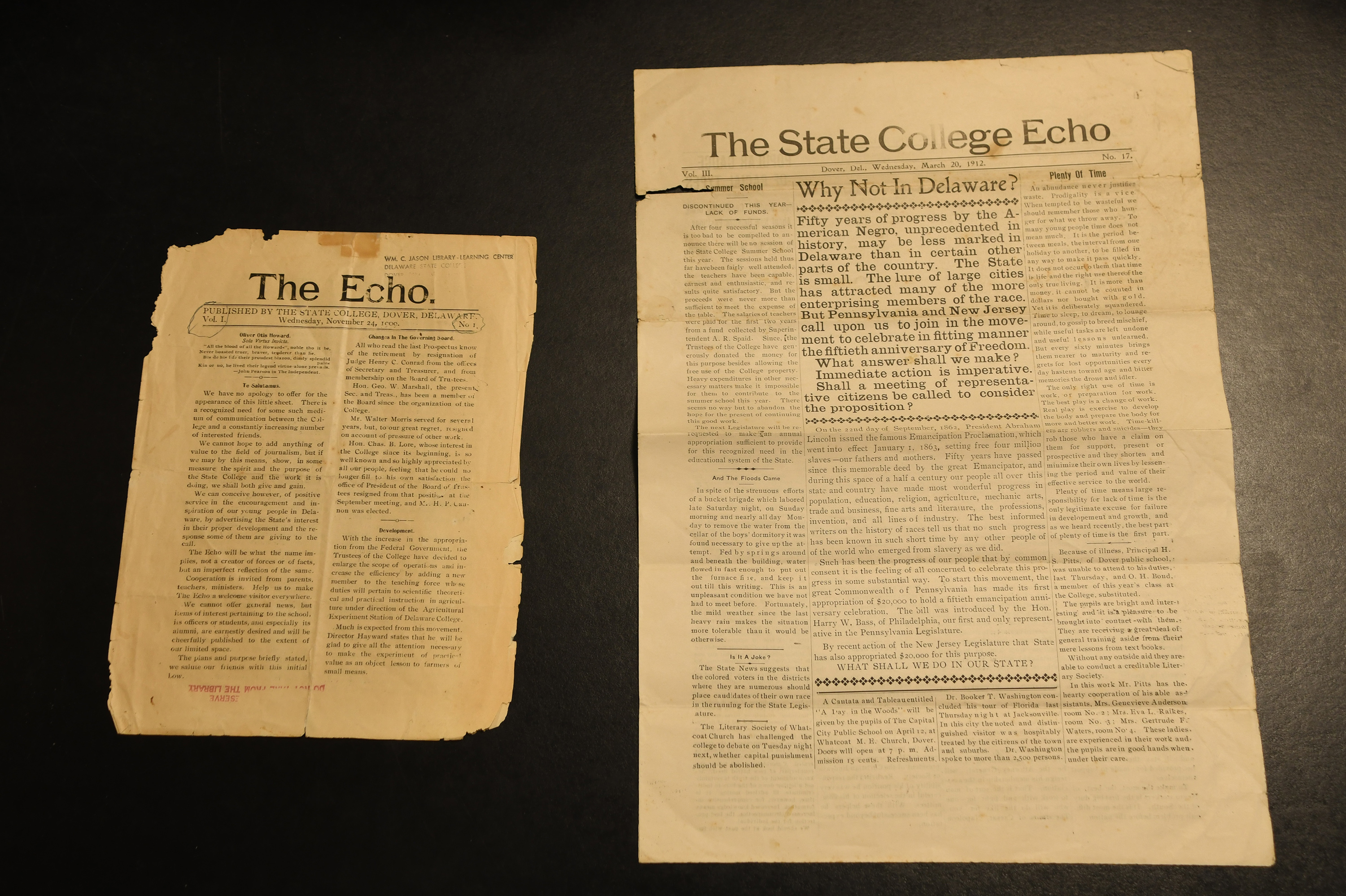
Black History Article – The Original “Echo” 1909-1912
While The Echo is well known as the University’s official alumni magazine, it actually began as a four-page student newsletter in the early 1900s.
The original launching of The Echo was facilitated in 1909 at the then-State College for Colored Students when the Board of Trustees authorized College President William C. Jason to purchase a printing outfit for a “sum not greater than $400” – which would be just under $14,300 in 2024 dollars.
Up to that point, the only publication of the College was an academic catalog. The installation of the printing outfit gave birth to The Echo, which President Jason characterized in the 1910 President’s Report as “a little school paper.”
“This will give practical employment to a number of students and will prove a valuable advertisement to the school,” President Jason added in his report.
The first issue was published and distributed on Nov. 24, 1909. As a weekly publication, following the Volume and Issue numbers, at least 106 issues were published up to April 24, 1912. Of those, 47 survive and are preserved in the DSU Archives, giving additional glimpses not only into the campus life of the SCCS but also some information that would be of valuable interest to some local church histories.
In the inaugural Nov. 24, 1909, issue, an introductory article stated the purpose of the newspaper would be “items of interest pertaining to the school, its officers, students, and especially its alumni.”
By the publication’s sixth month of existence (April 1910), it became clear that in addition to publishing SCCS-related items and articles, The Echo had also become a communication medium for local churches. The denomination that benefited the most was President Jason’s Methodist faith.
As a Methodist minister, upon assuming the mantel of SCCS President, his denomination permitted him to suspend his full-time commitment to Methodist ministry service. However, the 2½-year reportage by The Echo made it clear his connection to the Methodist Church remained strong. In addition to providing publication space for Methodist news and church events, the publication also often noted President Jason’s frequent guest preaching engagement at churches throughout Delaware. The Echo also provided space for local churches of other denominations as well.
In all probability, extending the publication’s communication arm to the church community was a business decision. At the cost of two cents a copy and 50 cents for a year’s subscription, selling single copies and subscriptions brought in revenue that, in addition to paying for printing supplies, also provided a modest wage for The Echo’s editor and business manager.
The first editor and business manager – all SCCS students – were Herman S. Pitts and Charles T. Gaillard, respectively. A few others succeeded them through the 30-month run of these surviving publications. From the scant information offered concerning their duties, the editor was charged with coming up with news content and determining the layout priorities of each issue; the business manager handled the distribution and sold subscriptions.
The Echo publicized the activities of campus chapel services, the student organizations such as the Christian Endeavor Club, the Morrill Douglas Literary Society, the Harmony Star Club, the SCCS Band, and Choir as well as the students of the Cadet Corps, which fulfilled the requirement of the Morrill Act of 1890 that military training be a part of the curriculum offerings. Items about those organizations covered their election of officers, providing the names of the students who were the leaders of those groups.
The publication frequently included items about the debates held by the Literary Society and the Harmony Star Club, which included topics such as “Resolve that George Washington was a greater character than Abraham Lincoln,” “Resolved that the Negro man respects the Negro woman as he should,” and “Resolved that Emigration should be Restricted,” and others.
The student newsletter also reported the athletic successes and failures of the College’s fledgling football and baseball teams, which had games against teams from Milford, Smyrna, and Chester, Pa.
The Echo was also used to advertise the Summer School of Methodist for colored teachers that was held at the SCCS. Articles detailed who the summer school faculty were – which included President Jason, other SCCS faculty, and renowned Delaware educator Alice Dunbar – and the courses they taught during the sessions. The publication coverage of this summer workshop noted that some graduates of the SCCS Normal School (the Teacher Education Program of its time) were among the colored teacher attendees.
The student newspaper also provided advance notice of the early July 1910 visit to Delaware of Tuskegee Institute founder Booker T. Washington and his itinerary of stops in the First State – including speaking in Dover from the balcony of the Richardson Hotel (most probably a special allowance made at an otherwise segregated hotel). Unfortunately, The Echo issues published after his visit did not survive, an event that certainly would have been written about by the student newspaper.
Dr. William M. Henry was often a topic of items reported in The Echo due to his standing as the most notable SCCS alumni of his time. After graduating from the SCCS in 1902, he went on to earn a Doctorate in Medicine from Howard University. He then returned to become a prominent doctor of the colored residents of Kent County and beyond. He also served as a physician for the SCCS and as a science faculty member, as well as the President of the SCCS Alumni Association.
The College also ran advertisements on the SCCS and its offerings in the publication. Typically, the last page of most of the issues was devoted to classified-style advertisements for local businesses, which apparently brought the SCCS journalistic enterprise advertising revenues.
In 1911, The Echo began publishing articles relating to local, regional, and national stories. A July 19 issue reported the hanging execution of a Negro man and questioned whether he was guilty of the crime.
To demonstrate the racial bias of a mainstream newspaper, The Echo’s Dec. 10, 1911, issue noted how Wilmington’s daily The Morning News published in bold large letters NEGRO ATTACKED A WHITE WOMAN. The Echo showed the end of the article that was mentioned in smaller type, “She believes the assailant was a negro, although it was difficult to see him plainly in the dark.”
The Echo follows that reprint by noting: “We are used to the practice in some quarters of attributing every crime to a Negro till it has been proven to have been committed by someone else.”
Often much of the front page would be occupied by an article on some contemporary topic authored by SCCS faculty, such as “The Business Woman” by Lydia Laws, “The Negro as a Soldier” by Prof. F.T.F Buckley, “Education Lessens Crime” by C.E. Anderson, as well as a three-part article entitled “Judge Not” by President Jason. There also were articles published by outside authors.
The Dec. 13, 1911, issue notes that the College had recently purchased a printing outfit from the Bridgeville (Del.) Press “at a bargain.” This apparently enabled the publication’s expansion from a 10” X 7½” newsletter to a 15½” X 11” newspaper, with the latter first appearing in the Feb. 12, 1912, issue.
Although a college student newsletter and later newspaper, The Echo represented the first journalistic product by African Americans in Delaware, a distinction that probably helped them gain local subscriptions. At the beginning of 1912, however, The Echo reported that a new colored publication – the Tri-Color News – had been established in Salisbury, Md. By February 1912, it noted that another colored newspaper – The Enterprise – had been started in Dover, Del. This provided The Echo with new sources of news stories that it could run in its publication.
The launching of the newspaper-size publication in February 1912 also came with a new name – The State College Echo. The student newspaper continued to publish items relating to the College and the local church community as before but also increased its coverage of local non-SCCS issues and events.
One of the most prominent state stories in The State College Echo involved an effort to generate interest among Negroes in the First State to come together to come up with an observance celebration of the then-50th anniversary of the Emancipation Proclamation, similar to the event planning African Americans were doing in surrounding states.
The April 24 The State College Echo is the last surviving issue that exists in the DSU Archives. It is unknown if that was the last issue. Because there is no other surviving issue after that date, it is possible that, for unknown reasons, the publication ceased its production immediately after that last issue or soon after.
The DSU Archives’ next surviving student newspaper is the February 1940 The State College Lantern – the only Del State newspaper that survives from the 1940s.

